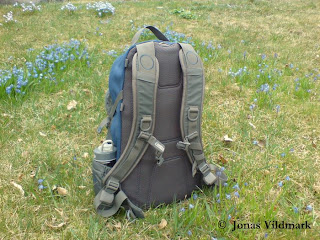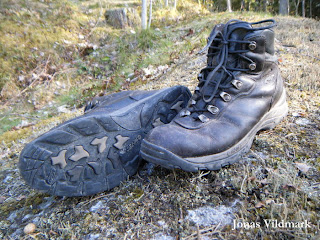 .
.  .
.  .
.
Place: Fjällnora-Almunge, Upplandsleden (The Upland Trail), Sweden
Time: 1 day in May
Mapp: Terrängkarta 620 Uppsala
.
As I hoped for this is a wonderful spring morning. The last couple of days there's been raining. I pack some lunch, tie my hiking boots and then I'm off. I take the bus to Camp Fjällnora just outside Uppsla. After a 3 km walk I reach the trail; Upplandsleden. The sun is shining, +15ºC (+59°F) in the air and the birds are singing... This is life! I walk the curly trail in a north east direction and the first km's offers a magical green forest with big fury rocks. Then I reach the glimmering lake called Lötsjön for a nice hike along it's shore. When I reach the quaint village of Länna I get to see the railway museum Lännakatten. Up until now I've been alone on my hike but now I meet two gentlemen preparing the trail for the summer season. They tell me that there will be a new rout from this point on and it's not yet finished. I thank my new friends for the information and take out compass direction instead of following a trail. The vegetation is of course a bit more rough without a trail to follow so the time pass quickly. The sky is turning darker and a storm is coming up, therefore I head to the nearest village; Almunge to catch the bus back to Uppsala. This got to be a really great hike. The beautiful 20 km spring hike took me in total six hours. A nice little hike I truly can recommend if you have a day off.
Please read more on our new website jonasvildmark.com















































